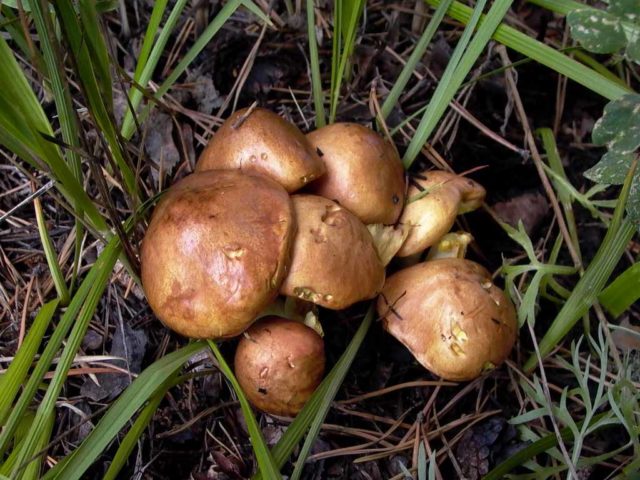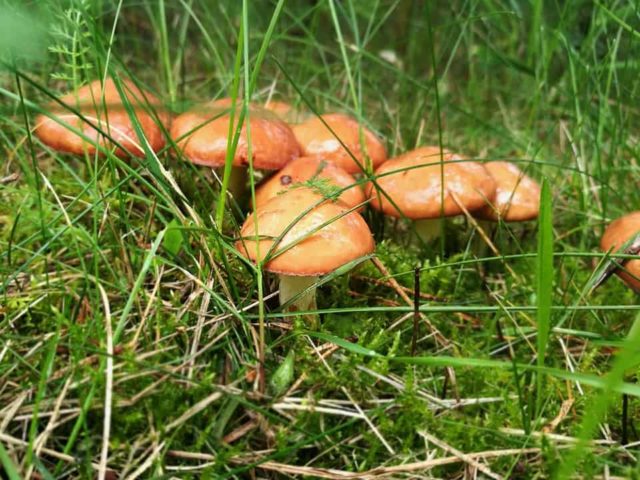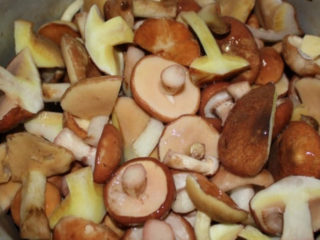Content
Butterflies grow almost everywhere in Russia, since the climatic conditions of the northern hemisphere suit them for almost the entire summer-autumn period. To successfully collect, you need to know the places that this species loves and, after waiting for good rain, go out on a quiet hunt.
When do boletus grow, at what time of year?
The period of growth and collection of boletus is quite long and occurs in almost all summer months - June, July, August, and autumn - September and October. The exact time depends on the climatic and weather conditions of the area.
When do the first boletus appear?
It has been noticed that boletus produces crops in waves throughout the season. The first wave occurs in the second half of June, when haymaking time begins.In July, after the rains, boletus will begin to actively grow. This is the second wave when you can go mushroom picking. The most mushroom time is August-September. At this time, trips to the forest to pick mushrooms are always crowned with success, especially if it has recently rained and the weather is warm.
In what weather do boletus mushrooms grow?
Boletus grows best after rain. On the 2-3rd day after precipitation, you can go on a quiet mushroom hunt. For rapid growth of the mycelium, warmth and sun are also needed. If it rains, but the weather is cool and cloudy, the mushroom will not rush to grow. Autumn specimens are considered the most delicious.
At what temperature do boletus grow?
Butterflies prefer cool weather so that the average daily temperature is no higher than +180C. Fluctuations in night and day temperatures do not affect the growth of mycelium. But if the night temperature drops to -50C, then the mushrooms stop bearing fruit.
Until what time can boletus be collected?
You can collect mushrooms until the end of autumn, when frost sets in. If the soil freezes 2 cm deep, the mushrooms stop reproducing. But if it suddenly became very cold, and the ground did not have time to freeze, and it warmed up again, then they will continue to grow again.
When does the butter season begin in Russia?
In the Moscow region and central Russia, the first boletus appears in early June and delights mushroom pickers with its appearance all summer long. And from the second ten days of August their most abundant growth is observed. At the end of September, their activity subsides, but they can still be collected until the first ten days of October.
In the Leningrad region and northern parts of Russia, boletus also begins to grow in early June. But the most active growth occurs in August-October.In November you can still collect them, but they may be frozen.
Siberia does not spoil its residents with long and hot summers. Even at the end of May there are returning frosts, and already at the beginning of October the first snow falls. The main time for collecting boletus is in August-September, when it is still quite warm and rainy.
In the Urals the climate is slightly milder than Siberian. Therefore, you should go out for collection in June, when boletus is already growing quite actively. The growth of the mycelium continues until the first frost, which usually occurs in the second ten days of October.
Growth time oil
It is better to go for mushroom picking on the second day after the rain, or more precisely, after 12-18 hours. They appear very quickly. They become ready for cooking within a few hours. But for this, in addition to rain and abundantly moistened soil, you also need warm air, as well as good sunlight. All this should be taken into account in order to correctly determine the time to go mushroom picking.
Where do boletus mushrooms grow?
Butterflies are widespread throughout Russia, especially in its northern part, as they love cool weather and pine forests. Each type of mushroom is adapted to live in certain natural conditions and in cohabitation with specific neighbors. There are many varieties that differ not only in appearance and taste, but also in where they grow.
In which forest do boletus grow?
This fungus prefers to form mycorrhiza (mutually beneficial cohabitation) with coniferous trees. Therefore, you need to look for it in pine or larch forests.Boletus grows less frequently in mixed pine forests with a predominance of birch or oak.
But you can find mushrooms not in the thick of the forest, but on the edges, clearings, clearings and sides of forest roads, since they love well-lit places and space. If tree plantings reach a height of 8-10 m, then mycelium does not form under them. But in young spruce forests you can conduct a successful quiet hunt for their entire families.
Under what trees do boletus grow?
The choice of location depends on the trees under which certain types of mushrooms prefer to live, and on the composition of the soil. Among conifers, boletus most often appears under five- and two-cone pines, larches and cedars. In mixed forests they are most likely to appear under pine or cedar. Different types of mushrooms prefer their own suitable soil, but most of them live on sandy soil. And on limestone you can find such varieties as larch, granular and gray.
How to properly collect boletus
Mushrooms should be collected early in the morning before the sun warms them. So, they will last longer. If you manage to spot one instance, then you need to carefully look around. There is a good chance that there is a whole group hiding nearby under the moss or blanket of pine needles.
The mushroom should not be pulled out by the roots. It needs to be cut off with a knife to preserve the mycelium, which will grow the next year. It is better to place the cut specimens with the cap down or on its side in a basket made of twigs. They will be better preserved in this position. No need to pack them in a soft bag or backpack. There they will wrinkle and crumble.
Immediately after returning home from a quiet hunt, mushrooms should be cleared of debris, washed and processed for further consumption. They cannot be stored.
Is it possible to collect large boletus
The caps of adult mushrooms can reach a diameter of 4-10 cm. They can be collected and used to prepare various dishes, if they are not wormy. But mushroom pickers advise giving preference to young mushrooms with caps of 2-4 cm. They are tastier and can be cooked whole.
Is it possible to collect dried boletus mushrooms?
You should not collect old and dried boletus, as well as those that grow near enterprises with chemical emissions. They managed to accumulate many substances harmful to the human body.
Processing oil after collection
This type of mushroom is suitable for any method of culinary processing. They are boiled, fried, baked, canned for the winter, dried, frozen. The most delicious are young autumn specimens. Before cooking, they need to be peeled, washed and the brown skin removed from the cap. Otherwise, it will ruin the whole appearance of the dish with its dye. If the skin is difficult to remove, you should soak the mushrooms in boiling water for a couple of minutes and then pour cold water over them.
Conclusion
Butterflies grow quickly and, under favorable conditions, in just a few hours they turn into full-fledged adult mushrooms, from which you can prepare various culinary dishes. The right time and place to collect these gifts of nature will result in a successful hike. And the pleasure that a mushroom picker gets from this can’t be compared with anything else.










